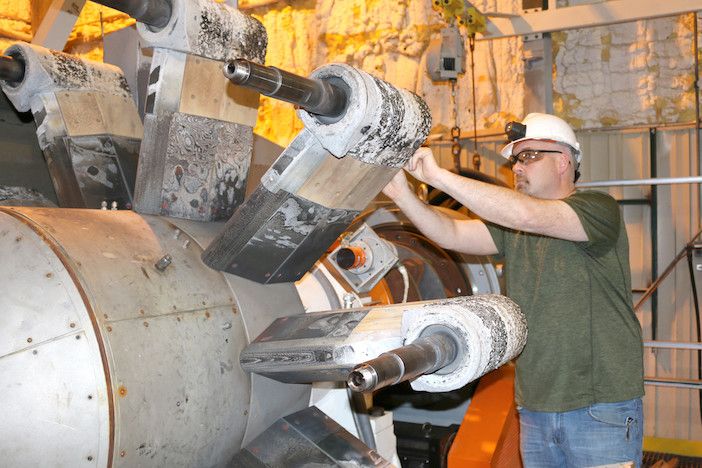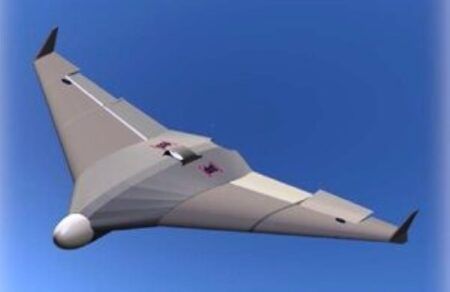The US Air Force expects to be handling more testing work than ever before at its Arnold Engineering Development Complex in Tennessee this year.
Increases are projected in areas of testing such as hypersonics, turbines, arc heaters, wind tunnels, rockets and the climatic lab. Some areas are expected to double and others will triple the amount of testing conducted this year.
Test operations division Chief Colonel Keith Roessig at the Arnold Engineering Development Complex’s (AEDC) said, “Everyone thinks back to the space race of the sixties. Arnold had a huge role in everything that went on back then and in some ways, we’re in a similar role today.”
According to Roessig the National Defense Strategy has the aim of building a more lethal force which means modernizing capabilities including nuclear weapons.
“The testing we do hits a lot of these areas. At Hill Air Force Base we set up a new combined test force to support the AF Nuclear Weapons Center, and while right now that is predominantly a test management function for upgrades of legacy systems, we’re preparing to do much more rocket testing,” he said.
“Right now we test two rocket motors every year to examine aging. In three to four years, we’ll be ramping up to test about 20 motors a year in support of modernization programs,” Roessig said. “We expect there will be follow up testing for surveillance of these new motors as well.”
Hypersonics
Roessig said hypersonics will drive much of the workload now and in the future. Some program offices will test in multiple AEDC facilities as well as at other bases in Air Force Materiel Command.
“When we talk about hypersonics, we’re not talking about a single facility or even a single site. In addition to Arnold Air Force Base, it is Tunnel 9, Holloman Air Force Base and Edwards Air Force Base all tied together to make everything work the way it should.
“Tunnel 9 has increased workload planned for the next few years. The von Kármán tunnels are busy examining aerodynamic data that complements the rain field erosion testing at the High Speed Test Track at Holloman. The Air Force Test Center designated the Hypersonics CTF at AEDC as the executing test organization for all AFTC hypersonics test and the personnel within the HCTF are busy coordinating the efforts between all these locations.”
The J-5 facility, formerly used for rocket motor testing, is being upgraded during the next several years and will eventually join the hypersonics test effort at AEDC.
Turbines
AEDC’s two largest turbine test cells now have two military projects running which is something that hasn’t happened in more than a decade. To prepare for the current workload and the upcoming engine competition in the Advanced Engine Technology Program, the C-2 test cell which had been used for commercial engines was reconfigured to test for military engines.
“There will be over 500 hours of testing on these engines. Projections are for this kind of workload for at least the next four to five years. Then we recapitalize all these aircraft and systems, so there’s more work,” Roessig said.
The sea level cells will be conducting accelerated mission testing to examine the lifecycle durability of the F135 engine. This testing examines whether the proposed re-designs of certain engine parts will actually last the complete engine lifespan.
Arc Heaters and Wind Tunnels
“The arc heaters are doing a variety of testing and roughly, they’d normally have 40-50 missions a year,” Roessig said. “In 2018, we accomplished about 40. This year’s request is to quadruple the workload. Our goal was 100 and right now it looks like we’ll accomplish between 80 to 90 tests. However, the request for 2020 is more than 170 tests, and we know the requirement is going to be almost 200 tests a year for the next four to five years or longer.”
Arc heater testing will determine the material selected and used in a flight test at Edwards Air Force Base. Roessig notes the schedule is tight to get the material data to Edwards before they begin launches from a B-52 over the test ranges in the Pacific Ocean.
A facility returning to service after being in mothball status for 19 years is the Supersonic Wind Tunnel, 16S. But this will be a new and improved 16S. When all of the funded upgrades are completed, the tunnel will be able to reach Mach 5.
“To have continuous flow of Mach 5 capability with such a large tunnel cross-section will be an important capability, and one of the things we’re looking at is increasing our staff here and having the ability to switch between 16T (the 16-foot transonic wind tunnel) and 16S more quickly,” Roessig said. “We’d like to run three shifts if we have the people to do that. However, as always, budgets will be a key driver to what test capability we can generate.”
Roessig said there are customers waiting to get into 16S and a full test load for 16T, so effectively using personnel and efficient processes will be key since those two tunnels can’t run simultaneously.
Space Chambers and STAT
AEDC Space and Missiles is involved in discussions with Air Force Space Command (AFSPC) about new capabilities and the new organization at AFSPC for test and evaluation.
“We’re working with Air Force Space Command to coordinate and stand up greater capabilities looking at the natural space environment, the atomic oxygen, the electrons, and combine that with man-made threats such as cyber or directed energy,” Roessig said. “That is an area we expect to see growth also.”
While Roessig can’t yet predict how much work this would bring to AEDC, he said the chambers and the Space Threat Assessment Testbed are receiving lots of attention from the Air Force Test Center as well as other government organizations.





